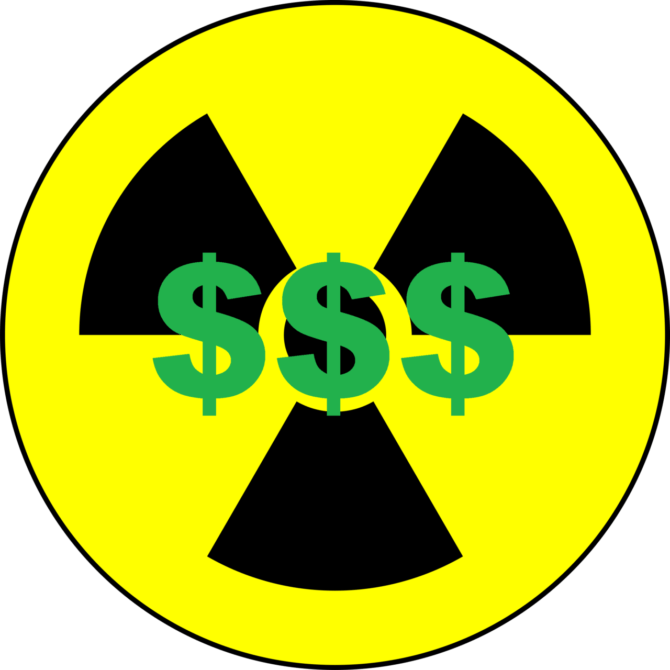
The U.S. National Nuclear Security Administration appears set to get all the money it wants for the current budget year, and a little more, including some $710 million to start work on a controversial two-state plutonium pit complex intended to bring a new nuclear-weapon mission to South Carolina.
A compromise budget bill that passed through Congress this week also includes the NNSA’s requested $10 million for building and delivering remaining W76-2 low-yield, submarine-launched ballistic-missile warheads, and the requested $52 million to keep the megaton-capable B83 gravity bomb in war-ready shape. That ends, for now, a debate about two politically contentious recommendations from the Donald Trump administration’s 2018 Nuclear Posture Review.
Trump was set to sign the bills that authorize and fund nuclear weapons programs at the National Nuclear Security Administration (NNSA) and the Department of Defense after deadline Friday for Nuclear Security & Deterrence Monitor.
Proposed 2020 funding of $16.7 billion for the semiautonomous DOE agency handily bests the $16.5 billion the White House requested for the fiscal year that began Oct. 1. It also marks better than an 8% increase from the 2019 appropriation. The House had recommended just under $16 billion for 2020 in its energy and water appropriations bill passed in June, the Senate almost $17 billion in a corresponding measure that never got a floor vote. The NNSA has been funded at 2019 levels for nearly one-quarter of fiscal 2020, under two stopgap spending measures.
NNSA Weapons Activities would wind up with a slight boost, to $12.45 billion from $12.4 billion requested, in the domestic priorities and international assistance minibus appropriations bill. Compared with 2019, those programs would go up some 12% from about $11 billion. The major weapons life extension-programs get the funding the White House requested for them in 2020, but increases for research and development activities, including Inertial Confinement Fusion program anchored at the Lawrence Livermore National Laboratory in California, push the final weapons appropriation above the request.
| Click here to see all the details of the 2020 appropriations and authorization process in the handy ExchangeMonitor NNSA Budget Tracker for 2020. |
Perhaps the biggest victory for current NNSA policy is the $710 million in the bill that matches the agency’s request for Plutonium Sustainment: a sharp rise from the 2019 level of about $360 million. The account includes funding to build a pair of factories designed to together annually produce 80 fissile nuclear-weapon cores by 2030, including 50 a year by 2030 at the Savannah River Site in Aiken, S.C.
Of the 2020 increase, NNSA sought some $410 million to begin designing the Plutonium Processing Facility, to be built on the remains of the canceled Mixed Oxide Fuel Fabrication Facility at Savannah River. This would be the second, and larger, of the agency’s planned pit factories. The first, planned for the Los Alamos National Laboratory in New Mexico, would begin cranking out 10 pits a year by 2024.
In a nod to House Democrats, who wanted to slow funding for the pit complex to the general loss of the proposed Savannah River pit plant, the compromise 2020 spending bill would require the NNSA to give Congress quarterly reports about the agency’s progress building both pit infrastructure and pits themselves. The agency itself has acknowledged it will be hard pressed to produce 80 pits annually by 2030, even with the funding it has requested.
The 2020 budget bill would also provide the $110 million or so required to begin early work on the W87-1, the warhead for the planned Ground-Based Strategic Deterrent intercontinental ballistic missile. However, the bill would gate 25% of the 2020 W87-1 budget until the NNSA giving Congress quarterly progress reports about the warhead, and the pits that will go in it.
Elsewhere in the weapons budget, the compromise bill would approve NNSA’s requests for major increases to its W80-4 modernization program to extend the life of the warhead slated to tip the planned Long-Range Standoff Weapon cruise missile, which the Pentagon wants to deploy on or after 2025. The NNSA would receive the roughly $900 million it sought for W80-4 in 2020, up from about $655 million in 2019, and 25% more than the agency initially thought it would need for the life extension this year. The NNSA has moved to front-load development of the refurbished warhead, pushing more of its development to the early years of the program in an attempt to make the first production unit of the warhead — essentially, a war-ready copy of the weapon that is taken apart bit by bit to determine whether its design and manufacturing processes are sound — in 2025.
The NNSA’s Cost Estimating and Program Evaluation office has said that 2026 is a more realistic date for the W80-4 first production unit.
Meanwhile, the NNSA’s Defense Nuclear Nonproliferation Account would receive a proportionally larger boost, relative to the request, than Weapons Activities. The nonproliferation office, which seeks to reduce the supply and illicit distribution of weaponizable radiological material throughout the world, would get just over $2 billion in the final 2020 bill, compared with a request of just under $2 billion.
Throughout the protracted 2020 budget negotiations, which began before Memorial Day and wrapped up the week before Christmas, Democrats had complained that Defense Nuclear Nonproliferation got shortchanged to help fund increase for weapons programs.
The Global Material Security account, with its portfolio of domestic and international nonproliferation programs, would get the biggest increase in Defense Nuclear Nonproliferation: about $440 million, or 30% more than the requested $340 million.
Despite the compromise budget, NNSA programs funded at the request will be playing catch-up after about three months of continuing resolution that held agency funding to the equivalent of the 2019 budget: more than $1 billion lower, on an annualized basis, than what the NNSA said it would need for the fiscal year that began Oct. 1.